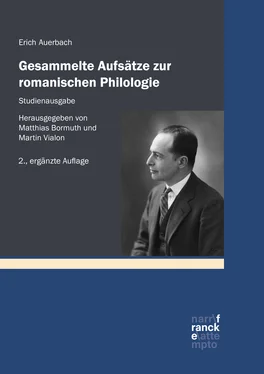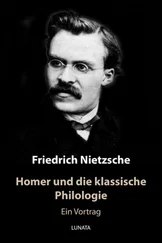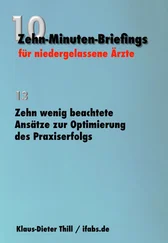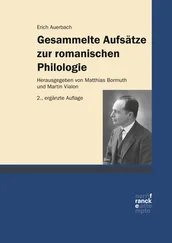The image meridiana face comes from Bernard’s interpretation of Cant. 1, 6, indica mihi quem diligit anima mea, ubi pascas, ubi cubes in meridie. It cannot be clearly gathered from the brief allusions of the sermon de aquaeductu , but is fully explained in the commentary to the quoted verse of the Canticles ( Sermones in Cant. XXXIII, Patr. Lat ., LXXXIII, 951). That noon which the bride searches for, while she still walks in the flesh, while she only through faith possesses a shadow of the truth, is eternal beatitude: etenim illa meridies tata est dies, et ipse nesciens vesperam ; or a little later:
… sane extunc (after Christ’s ascension) elevatus est sol, et sensim demum diffundens suos radios super terram coepit paulatim ubique clarior apparere fervidiorque sentiri. Verum quantumlibet incalescat et invalescat …, non tamen ad meridianum perveniet lumen, nec in illa sui plenitudine videbitur modo, in qua videndus est postea, ab his dumtaxat, quos hac visione ipse dignabitur. O vere meridies, plenitudo fervoris et lucis, solis statio, umbarum exterminatio, desiccatio paludum, fetorum depulsio! O perenne solstitium, quando iam non inclinabitur dies! O lumen meridianum. …
[‘Show me that spot, as Jacob, Moses, Isaiah, still in the flesh, saw God face to face’:] vel etiam quomodo Paulus raptus in paradisum audivit verba ineffabilia, et Dominum suum Jesum Christum vidit oculis suis; ita ego quoque te in lumine tuo et in decore tuo per mentis excessum merear contemplari, pascentem uberius, quiescentem securius. Nam et hic pascis, sed non in saturitate; nec cubare licet, sed stare et vigilare propter timores nocturnos. Heu! nec clara lux, nec plena refectio, nec mansio tuta: et ideo indica mihi ubi pascas, ubi cubes in meridie. …
I should like to express my sincere thanks to my colleague Prof. W. KranzKranz, W. for his many valuable observations, and to Mr. H. S. BoydBoyd, H. S. for his kind help in translating this article into English.
TypologicalTypologie symbolismSymbolismus in medieval literature (1952)
In DanteDante’s third heaven, the heaven of Venus, the soul on whom DanteDante apparently wishes to focus our attention, is introduced to him, by one of her companions, in this manner: ‘Now, I will satisfy the ultimate desire which this star has suggested to you; you wish to know who is hidden in this light which shines about me like a sunbeam in pure water: this soul is Rahab, and her splendor gives to our ranks the seal of supreme beatitude; she was the first to be received into this heaven when Christ liberated the souls from hell; it was most fitting that she should be in one of the heavens as a trophy of the victory that was won with both hands; and this because she contributed to the first conquest made by Joshua in the holy land, a remembrance which means little to the Pope.’ ( Par . 9, 109–126). And then, the speaker continues with a violent attack against the avarice of the clergy.
This passage is full of problems. Rahab, in the second and sixth chapters of the book of Joshua, is the harlot who hides in her house the two spies sent by Joshua into the town of Jericho – who saves them by deluding their pursuers, declares to them her faith in the God of Israel, helps them to escape by means of a red cord through the window of her house which is on the townwall, and makes them swear that the Jews would spare her and her parents and all her family in the house. The men asked her to bind to the window, as a sign, the scarlet rope by which she had let them down; and thus only Rahab the harlot and her house were spared when all of Jericho, men and women, were put to death by the victorious Jews entering the town.
Now, why does the splendor of this harlot confer on the third heaven the highest degree of beatitude, why is the explanation of her position able to fulfill the ultimate desire which the star of Venus has suggested to DanteDante, why was Rahab the first to be received in this star when Christ liberated the souls of the old Covenant, what is meant by the victory won with both hands, and what has the avarice of the Pope to do with his forgetting the glory of Joshua in the Holy Land?
All these problems are easily resolved if you consider the figurative or typologicalTypologie interpretation of the book of Joshua which, in a constant tradition, fully developed already in the writings of TertullianTertullian, is explained or alluded to in an infinite number of commentaries, sermons, hymnsHymne, and also in Christian art. The book of Joshua, especially its first chapters, has always been one of the most popular objects of figurative interpretationFiguraldeutung; Joshua was regarded as a figure of Christ (the identity of the names Jesus and Joshua is emphasized as early as TertullianTertullian), and when he leads his people over the Jordan (just like Moses leading his people out of Egypt) he figures Christ leading mankind out of the slavery of sin and perdition into the true Holy Land, the eternal kingdom of God. Concerning Rahab, all ancient commentators consider her as a type of the church; her house alone, with all its inhabitants, escapes perdition, just as the church of the faithful will alone be saved when Christ appears for the last judgment; she found freedom from the fornication of the world by way of the window of confession, to which she bound the scarlet rope, the sign of Christ’s blood, sanguinis Christi signum . Thus she is figura figura Ecclesiae , and the scarlet rope, like the posts struck with the blood of the Lamb in Exodus, becomes the figure of Christ’s redeeming sacrifice. The conception of Jericho as eternal perdition was supported by the parable from Luke 10, 30 (a certain man went down from Jerusalem to Jericho, and fell among thieves) generally interpreted as a figure of the fall of Man. In the same manner, the victory gained with one and the other hand alludes to Joshua’s victory won with the help of Moses’ outstretched hands, the figure of the victory of Christ on the cross with his hands outstretched on the arbor vitae crucxae . Thus, Rahab, or the church stands, in our passage of the Paradiso, as a trophy of both victories, that of Joshua, and that of Christ; of the victory of Joshua inasmuch as Joshua prefigures Christ, and of that of Christ inasmuch as Christ is the fulfillment of Joshua ( implere ); both entities in the figurative or typologicalTypologie relationship are equally real and equally concrete; the figurative sense does not destroy the literal, nor does the literal deprive the figured fact of its status as a real historical event. Obviously, the last sentence of our passage, namely that the Pope has forgotten Joshua’s glory in the Holy Land, is also to be understood in a two-fold and typological manner. It is not only the Holy Land in its concrete and geographical sense which the Pope neglects by fighting against Christians instead of liberating it; he has also, for the sake of the maledetto fiore , the golden florin of Florence, lost all memory of the city to come, eterna Jerusalem . And now, the meaning of the passage has become completely clear: the first elect soul in the heaven of Venus is Rahab, a figure of the Church, that is of the bride in the Song of Songs, in love of her bridegroom who is Christ – a symbol of the highest form of love – and this view, as FolchettoFolchetto says, will satisfy the ultimate desire the star of Venus has prompted in DanteDante’s mind.
The method used here for the interpretation of the first chapters of the book of Joshua does, of course, not apply only to this text, but is part of an entire system which embraces the whole of the Old TestamentAltes Testament. When Saint Paul came to the conviction that a man is justified by faith alone, not by action according to the Jewish law, and that God is not the God of the Jews alone, the character of the Old Testament was changed completely – this was no longer the law and the particular history of the Jews, because ‘all these things happened to them in figura only’: thus the Old Testament became a series of prefiguration of Christ, of his incarnation and passion, and of the foundation of the Christian Church. Saint Paul himself gave a few figurative interpretationsFiguraldeutung (the conception of figurism as such was not unknown to the Jewish tradition), and the whole system developed so rapidly that we find it completely worked out, with an incredible abundance of details, in the earliest patristic literature. You will realize that this method of interpretation involves an approach to human and historical phenomena entirely different from ours. We are apt to consider the events of history and the happenings of every-day life as a continuous development in chronological succession; the typologicalTypologie interpretation combines two events, causally and chronologically remote from each other, by attributing to them a meaning common to both. Instead of a continuous development, the direction and ultimate result of which is unknown to us, the typological interpreter purports to know the significance and ultimate result of human history, because this has been revealed to mankind; in this theory, the meaning of history is the fall and redemption of Man, the Last Judgment, and the eternal Kingdom of God. We, on the other hand, are able to explain to a certain extent every single historical fact by its immediate causes and to foresee to a certain extent its immediate consequences, moving so to speak on a horizontal plane; with the typological approach, on the contrary, in order to explain the significance of a single historical event, the interpreter had to take recourse to a vertical projection of this event on the plane of providential design by which the event is revealed as a prefiguration of a fulfillment or perhaps as an imitation of other events. In view of the facts that education and culture were almost entirely ecclesiastical up to the fourteenth century, that the conception of human history, as taught by the church, was dominated by the interpretation of the scriptures, and that this interpretation was almost entirely typologicalTypologie and based on the trilogy fall of man, incarnation of Christ, last judgment – in view of all these facts it is evident that the typological conception of history had to exert a deep and lasting influence on medieval spiritual life even on laymen. Serinons, religious poetry (lyrical and dramaticalDrama), church sculptureBildhauerkunst, that is to say the three most important means of popularizing knowledge in the middle ages, were entirely impregnated with typology. May I draw the attention of my readers to the important difference which obtains between typology and other similar forms of thinking such as allegorism or symbolismAllegorie und Symbolismus. In these patterns, at least one of the two elements combined is a pure sign, but in a typologicalTypologie relation both the signifying and the signified facts are real and concrete historical events. In an allegory of love or in a religious symbol at least one of the terms does not belong to human history; it is an abstraction or a sign. But in the sacrifice of Isaac considered as a figure of the sacrifice of Christ, it is essential, and has been stressed with great vigor, at least in the occidental tradition, that neither the prefiguring nor the prefigured event lose their literal and historical reality by their figurative meaning and interrelation. This is a very important point.
Читать дальше












